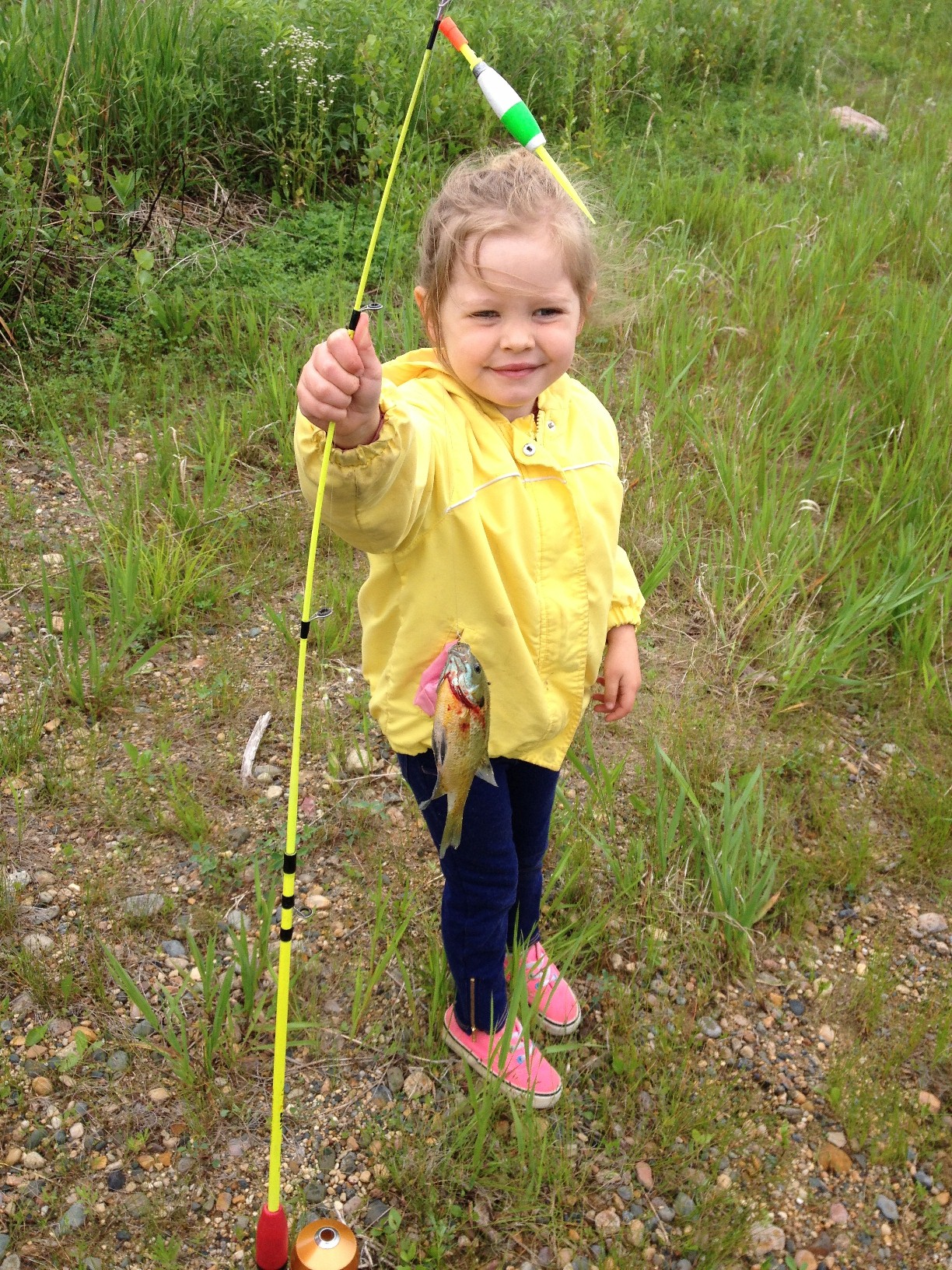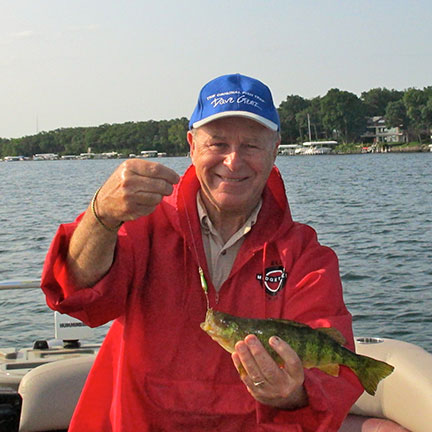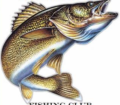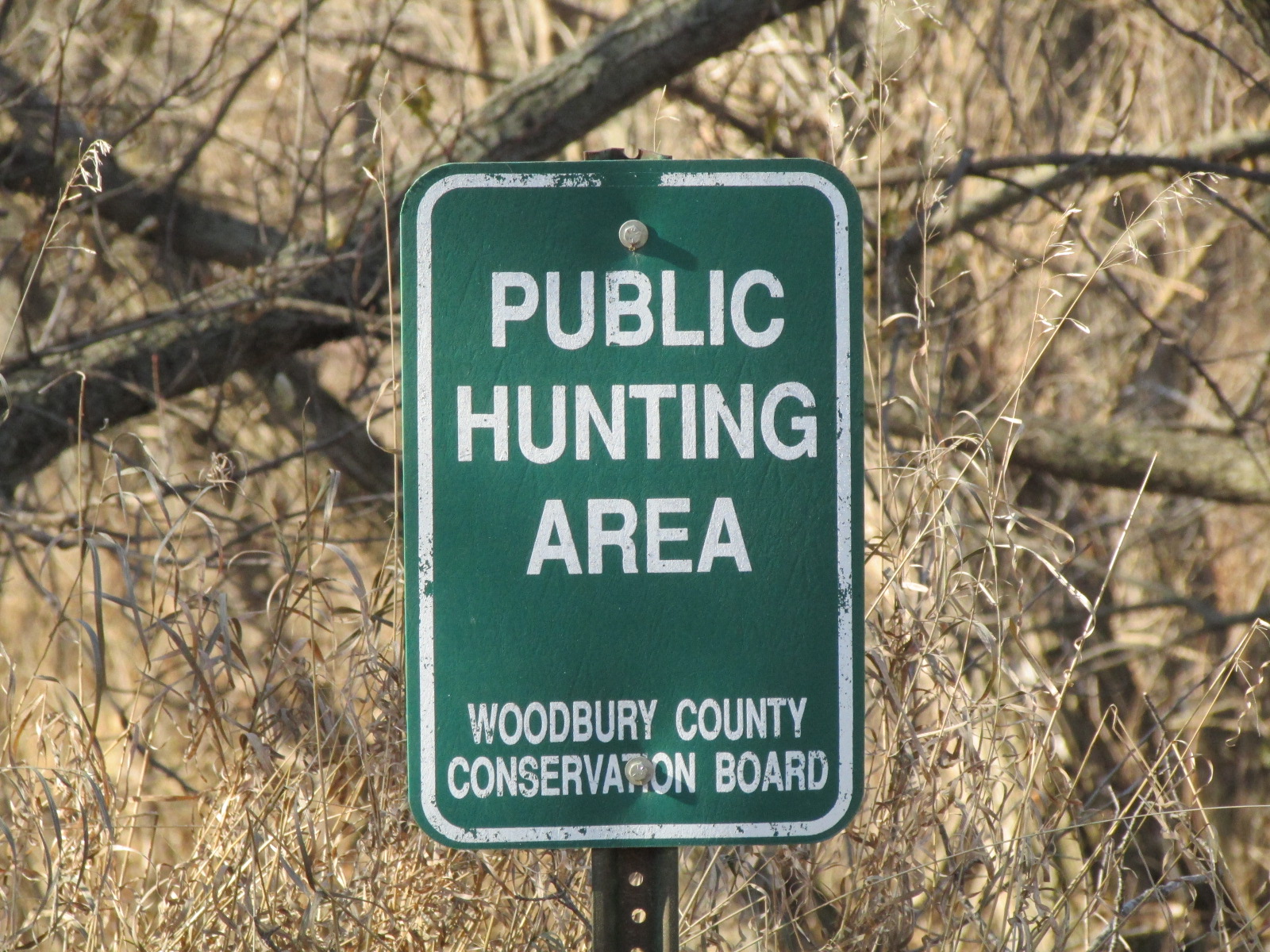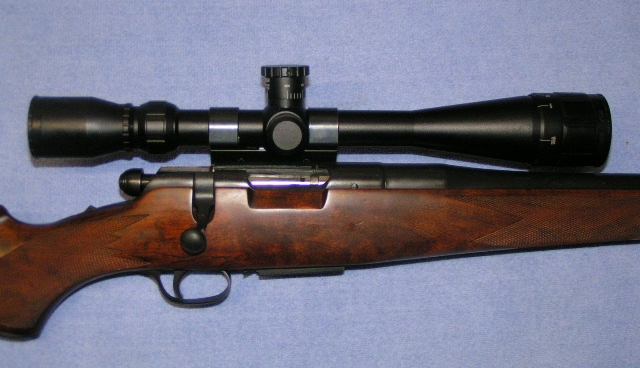By Steve Weisman
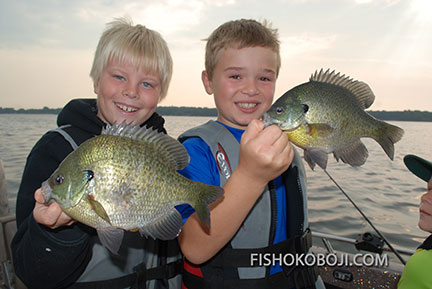
(photo by John Grosvenor) Grosvenor’s son, Calvin (L) and his cousin Max.
When John Grosvenor, longtime Iowa Great Lakes fishing guide (www.jtgexpeditions), thinks about taking his clients fishing on West Lake Okoboji, his eyes light up. After all, West Lake Okoboji is home to some of the finest bluegill fishing in the Midwest. “With its incredible water clarity, extensive weedbeds/lines that can be found in all of the bays and a strong bluegill population, fishing bluegills on this lake is an awesome experience.”
Here is what Grosvenor and his clients experience each time he runs his WX 2060 Skeeter on West Lake. During the month of June (just completed), Grosvenor has been targeting the shallow weed beds and the extensive dock system. “These shallow weed areas are always good bets. At the same time, West Lake has an incredible wood dock system. All of this wood is excellent habitat for not only bluegills but also other game fish. Because of its depth, the end of these docks can be in anywhere from 6-12 feet of water. With the water clarity and a good pair of sunglasses, you can see what kind and how many fish are around these docks. So, these are areas to target.” Grosvenor cautions, however, that not all docks are equal when it comes to holding fish, so it takes scouting to find the best ones.
As we move into the month of July, the fact that it is loaded with a series of bays that hold weedlines that run anywhere from 14-22 feet in depth means one thing: perfect bluegill habitat!
Lures and baits
Grosvenor always has an array of tackle ready for the day. His go-to presentation is a slip bobber rig with either a plain hook or a tiny gold jig (1/64 to 1/80-ounce) tipped with a Belgian worm (red worm, leaf worm), a medium to large leech or a wax worm or silver wiggler – in that order. Grosvenor will set the bobber to match the weeds depth, trying to be about two feet either above the weeds or off the bottom when fishing the deep weed edges.
“The slip bobber allows us to fish a lot of area. We will anchor on the wind side of the weedbed/line, so that we can cast with the wind. We can also cast on all sides of the boat. Many times when we do this, we will find one spot that seems to hold bigger bluegills. It’s then pretty easy to move toward that spot where the bigger fish are located. There is also something about a bobber moving with the waves in the water that attracts fish.”
The other option is straightlining a Shuck’s Jigger Minnow with one of these baits. “You fish this right over the side of the boat without a bobber. We will go to this when the fish are down in the weeds or along the deep edge of the weeds. Plus, the flash of the Little Jigger can really attract the bluegills.”
Summer and deep weeds
“This is my favorite place to fish,” says Grosvenor. “As water temperatures rise and the weeds begin to emerge in the 14-22 feet of water, I’ll head to these weed beds. I can say that these weedbeds/lines hold fish all around the lake. However, the more you fish the areas, the more selective you can be, and you will begin to establish a pattern of what you consider your favorite spots.”
Grosvenor notes that he can tell what kind of a fishing day it will be by simply driving along the weedline and watching his Lowrance HDS10 and its side-scan. “If I mark bluegills sitting above the weeds, I can pretty much assure you that the fish are going to be active and aggressive. They will be that way pretty much all over the lake. If I don’t mark them, then I know that they are down along the weed edges or even in the weeds themselves. Then it becomes more of a challenge and a change of strategy to get to these fish-say straightlining or vertical jigging a Shuck’s Jigger Minnows.”
Grosvenor says fish location can change daily, even by the hour. “They might be on top of the weeds, and all of a sudden they disappear. They haven’t left. Instead, they might have dropped down into the weeds or maybe down along the deep weed edge. “
Late summer
We have now moved into the month of August. The weeds are at full force, and now Grosvenor adds another spot around these weeds. “If they aren’t on top of the weeds, and they aren’t deep in the weeds, I will look to the flats on the outside of the weeds in 19-25 feet of water. “ Again, according to Grosvenor, it’s about working a spot.
At this time of year, Grosvenor finds that medium to large leeches become a great gill catcher! “It seems the leeches will attract the larger bluegills. There are times when we get pestered by lots of 5-7 inch fish. The smaller fish tend to leave the leeches alone and give the bigger fish the chance to go after the bait.”
Plus, leeches mean bonus fish. On any given day, Grosvenor’s clients have the opportunity to catch smallmouth bass, largemouth bass, northern pike and walleyes. Nothing beats a youngster battling a 20-inch smallmouth or walleye!
Using the anchor
Grosvenor believes in using an anchor system for more than just sitting in one spot. “The difference between no fish, small fish and big fish can be only a few feet when you’re fishing these weeds. I have a Minnkota Terrova I-Pilot, so it’s really easy for me to bump the boat along. We’re always fan casting our slip bobber rigs, so when we get a good bite going in a certain spot, I’ll move us a little so that we can fish more of that area.”
If you are using a traditional anchor, then set up with the wind so that you can move along the weedline and every so often let out a few feet of line. “Of course, you don’t want to run out of rope,” says Grosvenor with a laugh.
Keeping bluegills
Grosvenor says his clients like both the fight of the bluegills, their willingness to bite a hook and their table fair. “They are a great tasting fish. I always try to make sure that my clients get all they fish they want for a meal. However, I also believe that even though the limit is 25 bluegills and we can catch that many per person – we don’t NEED to keep that many. I really believe in catching plenty for a good meal, but catch and release is a lot of fun.”

